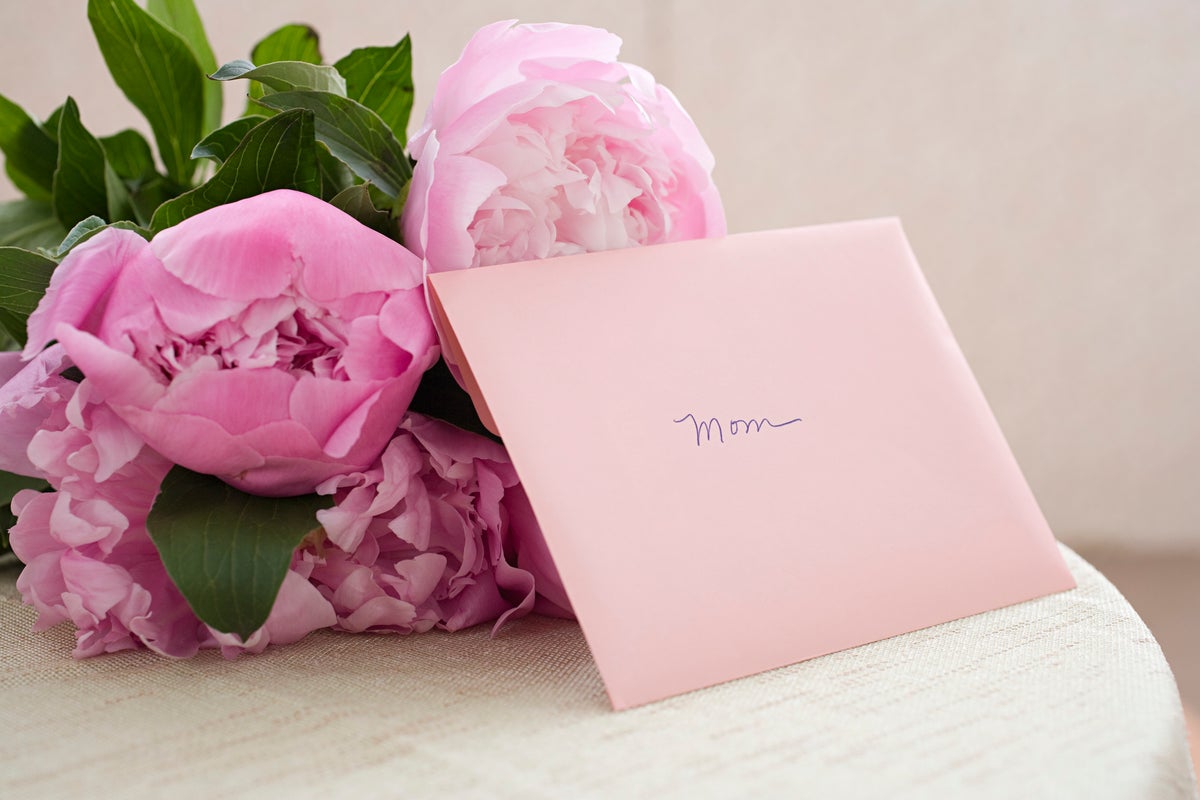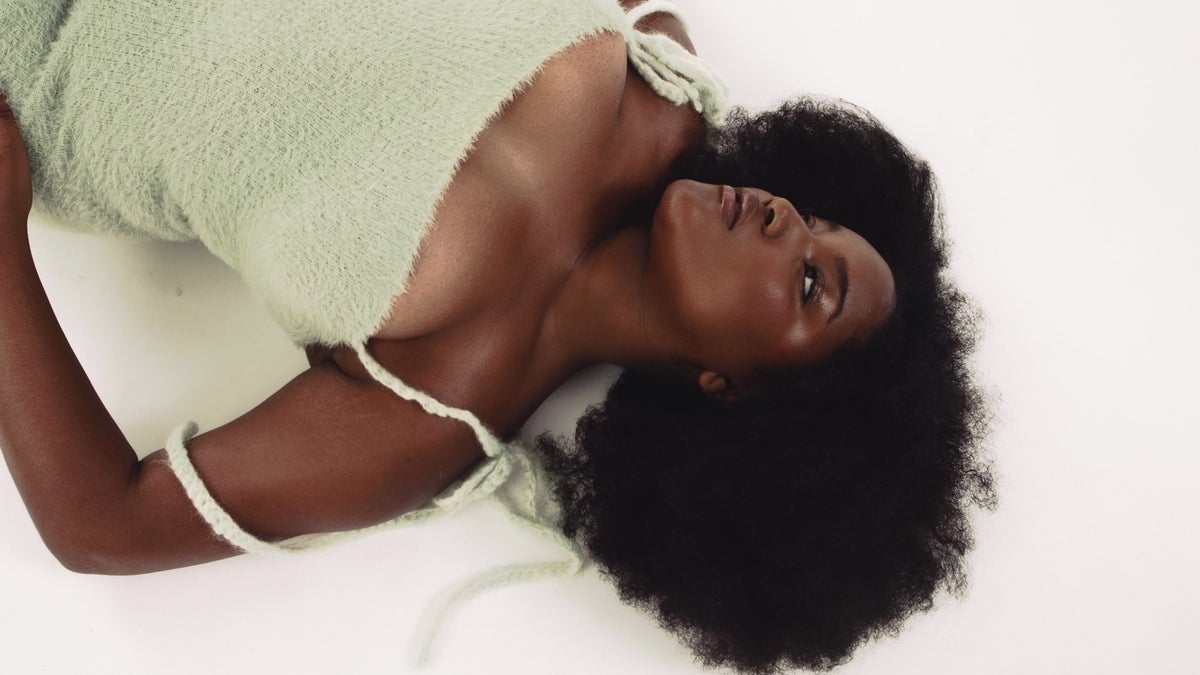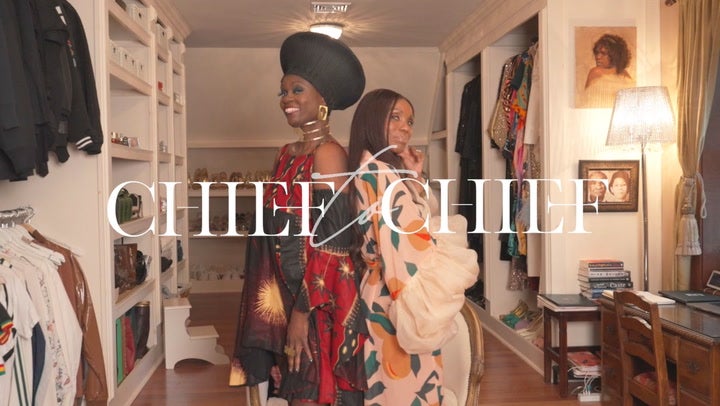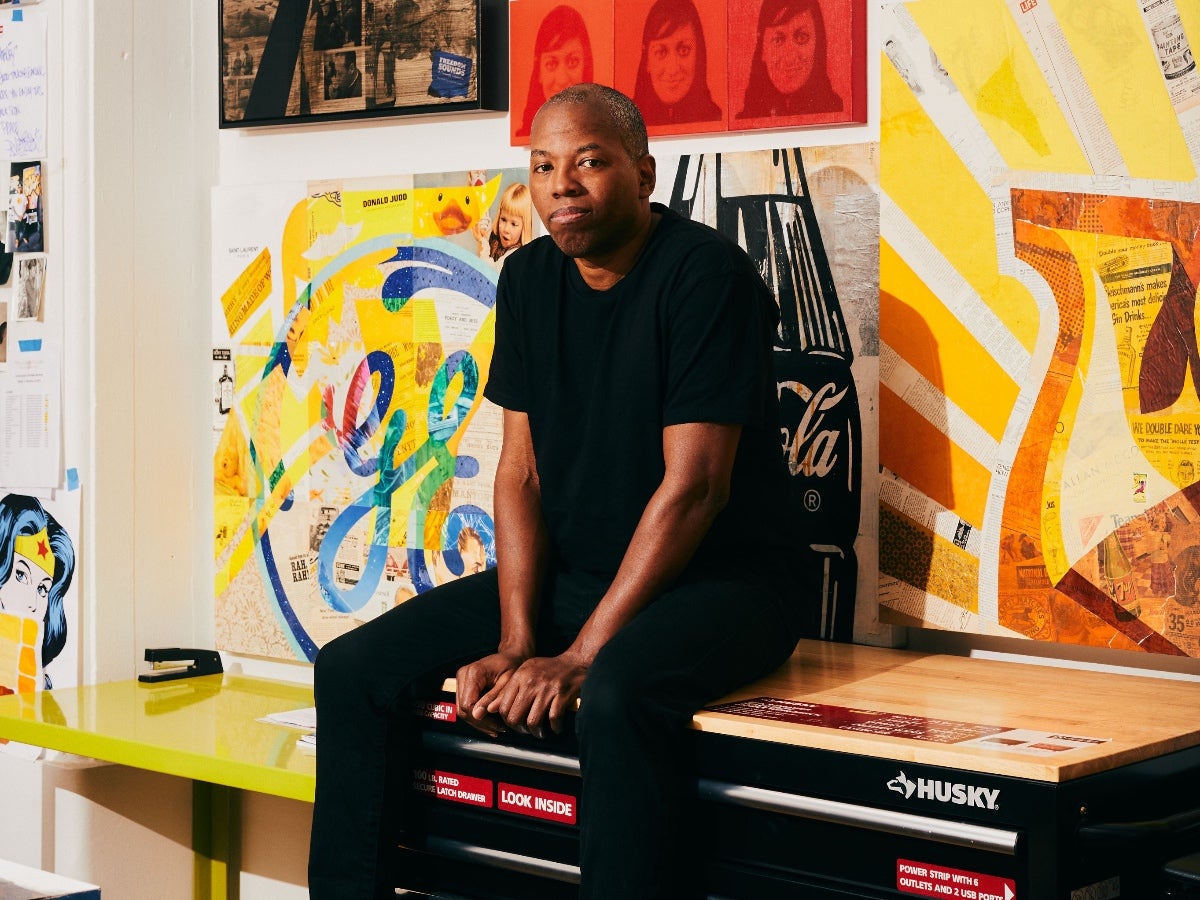
For over 40 years, Cey Adams used his art to define a generation. Through elements such as graffiti, pop art, and street culture, this New York native has created thought-provoking pieces inspired by his life, experiences, and Hip-Hop. Now, a celebration of the artist’s decades-long career can be seen at Austin’s West Chelsea Contemporary until November 19, in an exhibition titled Combinations.
To Adams, the word Combinations means several things. Whether it be the collaboration between creatives, his ability to fuse multiple styles, techniques, and methods, or the unbreakable relationship between art and music, the connection of items, artifacts, ideas and the like, always has the opportunity of becoming something beautiful if executed correctly.
“It’s something that there are no rules when it comes to who can participate, and that’s a plus,” Cey explains to ESSENCE about why art and Hip-Hop are so intertwined. “It’s visual. Compared to starting a career in music, it doesn’t cost anything. To be able to have a recording career, you at least need a laptop to be able to make some kind of music. You can’t just bang on a tin can or a pot. So, I think art is one of those things. All you need is a white piece of paper and a pen or a pencil and you can do your thing.”
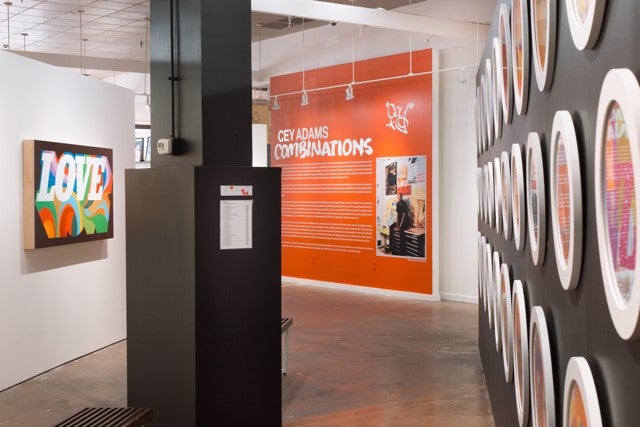
“I mean, certainly you have to have the natural talent within, but that’s one of the things that I love about hip hop culture,” he adds. “Nobody gets to decide who can participate, because if you have the skills, people will move over and make room.”
At the core of Combinations is Adams’ journey as an artist, and his undeniable contributions to the genre that entered its 50th year in existence this past August. As a pioneering graffiti writer in New York City during the late 70s, Cey also appeared in the historic documentary Style Wars. In 1984, he flourished in the position of founding Creative Director of Def Jam Recordings, and co-founded The Drawing Board, which was responsible for some iconic album covers and logo designs, shaping the identity of this era’s biggest artists.
With this solo show, Adams invites viewers to reflect on the many of this country’s artistic traditions, while exploring themes of race, gender relations, and societal issues. His work in Combinations serves as a powerful reminder of the vast potential of art and its ability to shape the world’s cultural landscape.
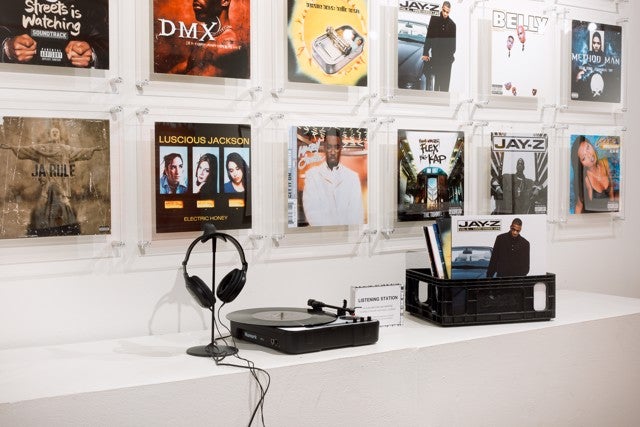
ESSENCE: Names and titles are very important, and the title of your exhibition, Combinations, what led you to land on that title and what does it mean?
Cey Adams: Well, Combinations, as the name entails, are a lot of different things. This is an exhibition that spans more than 40 years, and the idea for the exhibition was, “Okay, how can I make an exhibition of my work and do something to honor my friends as well?” Because I’ve been curating a lot over the last handful of years, and so I always like to do things where I can pull my friends in as well. So, I came up with this idea and I called the show Combinations as a way of celebrating the past and the present.
So, for example, my friend Martha Cooper is in the exhibition along with me. My friend Janette Beckman. I go back with Martha to the early ’80s, so that’s over 40 years all by itself. And then I’ve known Janette for over 30 years, or something like that, and then I have a newer artist that I’ve recently met. But the idea was to be able to put on an exhibition that features me, but it also introduces people to a lot of other talented visual artists that might not have the platform on their own, and really celebrate everybody all at once. The other thing is my work is a combination of a lot of different things. It’s at times graffiti and street art and graphic design and collage. And so it really spans, like I said, a long period of time and it’s combining all these different elements and time periods and people, and so I thought that the title, Combinations, was a perfect way to describe all of that.
Speaking about your friendship with Janette and Martha Cooper – when you’re collaborating with other artists, is it difficult sometimes bringing your vision and their vision together to create one piece of art?
No. For example, I did physical art collaborations with several different artists. I went into their studios and I saw something and I thought, “Oh, I really liked that painting. Would you be interested in doing a collaboration on that, since it’s unfinished anyway and you have to work on it?” They would work on it and then they would give it to me and leave me a little bit of real estate and then I would do my thing. And then in some cases, like with my friends, I brought a panel to them and I said, “You guys start it and I’ll finish it.”
But sometimes people don’t really understand and they put their mark right in the center and they fill up the whole thing, and then it sort of leaves me to find a way to dance around the perimeter, which is sort of what I get for giving somebody the option of starting the conversation. But oftentimes, it challenges me to find clever ways to communicate my message creatively.
For a lot of artists, they art as a hobby and a love first, and then it kind of manifests into a career. When did you see your art as more than a hobby, like, “Hey, I can actually make money from this”?
Yeah. I knew from the time I was a teenager. You have to understand, growing up in New York City, hip hop started in the early ’70s. That was a long, long time ago. And like I said, I got a front row view of watching it form. So, to look at that, I just knew right away that this was something that I could participate in and something that just spoke to me. It didn’t take a whole lot. But that said, it wasn’t right out the box, like I had a formula for becoming an overnight success. I did a lot of grunt work and I did all kinds of things to make a buck. And I painted on every surface imaginable, whether it was clothes, walls, I did murals in people’s apartments and homes, and just all kinds of things. Anything that had a surface that you could put a mark on, I painted.
I figured out very early on that I was an artist. The trick was to figure out how to earn a living being an artist. That was the challenge. It wasn’t anything else. But it was to try to figure out how to be professional, that was something that was certainly challenging, because you had all of this preexisting hierarchy that said, “Okay, these people can participate, but not these people,” and being young and a person of color in New York, the art world elite wasn’t quick to open the doors up to my friends and I. So, we had to make our own way.
And that’s the beauty of graffiti. We did things on our own terms, and the only critics that we had were each other, and it was something, looking back, that was really revolutionary about what we were doing. We did not ask for permission to join their club. We started our own club, and that’s the same thing that hip hop did. We didn’t ask for permission to be a part of mainstream music. We said, “We’re going to do our own thing and make them come to us.”
So, in having these two passions, what did you gravitate to first – hip hop or art?
Well, the thing is, I’m 61 years old, and so if you know anything about the origins of hip hop, I am growing up right as it’s being born. So, I’m in it. It’s not even like I gravitated towards it. It was like living in a house with brothers and sisters. They’re just there with you and it’s all happening together at the same time. And I’ve been an artist my whole life, so if I had to say something, I would say certainly art was there first because I’ve been making art since I was a small child, like single digits. And by the time I’m a teen and I get introduced to graffiti, it’s just a creative outlet just to channel some of the energy that I had being young and running around in the streets of New York.
But I feel really fortunate that I came around during the birth of hip hop, because I got a firsthand look at the development, and to watch folks like Grandmaster Flash and the Furious Five and Afrika Bambaataa starting out and doing their thing, and certainly countless others. I could go on and on and on. But when it comes to the founding mothers and fathers, I just think that, man, I feel so lucky that I was there and I know every single one of these people. And that’s the other thing about doing this work, I feel like I’m an ambassador for the culture and it’s my responsibility to educate people about folks that might not be household names, so they remember people like Sha-Rock from the Funky Four Plus One More, and folks like Spoonie Gee and Jimmy Spicer.
Time moves fast and people have very short memories, and they don’t understand the contributions to the culture. And even things like Crazy Legs and the Rock Steady Crew, these are folks that were really out there doing it day in and day out, and here we are 50 years later, and it’s important to acknowledge them in the same breath as the folks that are world famous.
When you were at Def Jam, you co-founded The Drawing Board. Tell me, when you were designing these logos and these album covers for these iconic artists, what was the process like?
Well, the way it worked was the music always had to lead. Always. Usually, they would come into the office and we would sit down in the conference room, and sometimes you’re meeting them for the first time, but this is a full-on staff meeting where everybody at the record company is meeting the artist, sometimes for the first time, like I said. And you hear from them first-person what their aesthetic is. 99% of the time, they don’t have any idea about creative, because they’re just focusing on the music, and most of the time they’re trying to get into the finance department because that’s where the check is going to come from. And art always, most of the time, took a backseat. They didn’t really understand how art and marketing fit into the scheme of things.
When people want to make a record, they want to do just that; they want to make a record, and image was something that usually came later. And then obviously years later, when people got savvy, they realized that they had to have a sense of who they were in order to distinguish themselves from other recording artists. But we would sit down and kick around ideas. I’ll give you one example, like Redman. Redman comes to the label, we’ll just say the mid ’90s, and he’s got a knit hat on and a piece of tissue hanging out of his nose, and he just looked like he rolled from under the bed somewhere. And I say that with love, I just have to clarify that, because if folks are listening to this that don’t really know my relationship with Redman, they might get it confused. But he said to me, “Hey, I want you to make a logo for my record, and I want it to look like chaos and I want it to look like something that a child did.” He says, “I want it to look wild. I want scribbling. I want it to just really look hectic, but legible.”
And that was the creative direction that he gave to me, and because I have a love of graffiti, I did all the logos at the label. After we got really, really busy, I had a team of designers and art directors, but when it came to designing logos, I did all the logos for everybody. Once in a while, somebody else would get an opportunity, but most of the time it was me, because it was just something that I really enjoyed doing and it gave me an opportunity to have a conversation with the recording artists that was a space that I owned, whereas I couldn’t speak to the music beyond whether or not I liked it. But when it came to logo design, that was my thing. And so for Redman’s, like I said, I created something that, in my opinion, described exactly what it was he conveyed to me when we met for the very first time.
The true testament of a good logo is when somebody uses it over and over and over and over again, and you can right now look at any artist that’s had more than three releases and see if they use the same logo on every record. And you look at Redman, every single album he’s put out, whether it’s on Def Jam or not, he’s still using that logo that I created for his very first record.
Yeah, when I see it, I think about The Shining. So, here’s a broader question too, and just seeing everything that you’ve done in hip hop, what does hip hop mean to Cey Adams?
Well, to me, obviously it’s ever-evolving, number one. But hip hop is really about opportunity, because young people, for the most part, really want to be seen and heard. Let’s just start there. And this is a creative outlet for them to have fun with their peers, impress their peers, in some cases impress their parents. But first and foremost, it’s a way of communicating from young person to young person, because that’s really all it was before the business side of it took hold. It was just about that. It was like FUBU said, for us, by us. And that’s what hip hop is to me. But more than anything, it’s driven by youth culture.
I’m not saying that older folks cannot participate, but at the core, it is about communicating to young people. And that’s the thing that I love about it so much, is that that thing has not changed. It’s still just about young people, and it’s just one of these things that I love, because oftentimes, I don’t always get it, but I also don’t need to, because they’re not talking to me.
So, in closing, when the viewer leaves the exhibition, if you would want a singular message that they could take from it, what would you want them to take from Combinations?
For me, it’s the same message that I had when I was a kid, is that the people that do this work, and I’ll just say myself in particular, is that we have as much talent as the people that came along during Picasso’s era, during the pop era of the ’50s and ’60s. The only difference is we’re younger, and this is a new time, but we have a strong message and we definitely want to be heard.



